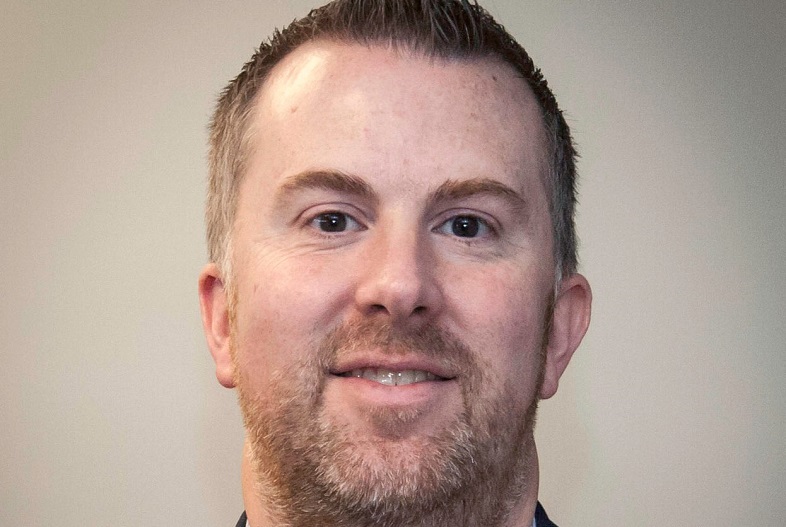
Study: Single-Sport Athletes Injured More
November 3, 2016
A study conducted by the University of Wisconsin School of Medicine and Public Health and funded by the National Federation of State High School Associations (NFHS) Foundation revealed that high school athletes who specialize in a single sport sustain lower-extremity injuries at significantly higher rates than athletes who do not specialize in one sport.
The study was conducted throughout the 2015-16 school year at 29 high schools in Wisconsin involving more than 1,500 student-athletes equally divided between male and female participants. The schools involved in the study represented a mixture of rural (14), suburban (12) and urban (3) areas, and enrollments were equally diverse with 10 small schools (less than 500 students), 10 medium schools (501-1,000 students) and nine large schools (more than 1,000 students).
Athletes who specialized in one sport were twice as likely to report previously sustaining a lower-extremity injury while participating in sports (46%) than athletes who did not specialize (24%). In addition, specialized athletes sustained 60 percent more new lower-extremity injuries during the study than athletes who did not specialize. Lower-extremity injuries were defined as any acute, gradual, recurrent or repetitive-use injury to the lower musculoskeletal system.
“While we have long believed that sport specialization by high school athletes leads to an increased risk of overuse injury, this study confirms those beliefs about the potential risks of sport specialization,” said Bob Gardner, NFHS executive director. “Coaches, parents and student-athletes need to be aware of the injury risks involved with an overemphasis in a single sport.”
Among those who reported previously sustaining a lower-extremity injury, the areas of the body injured most often were the ankle (43%) and knee (23%). The most common types of previous injuries were ligament sprains (51%) and muscle/tendon strains (20%).
New injuries during the year-long study occurred most often to the ankle (34%), knee (25%) and upper leg (13%), with the most common injuries being ligament sprains (41%), muscle/tendon strains (25%) and tendonitis (20%).
In addition, specialized athletes were twice as likely to sustain a gradual onset/repetitive-use injury than athletes who did not specialize, and those who specialized were more likely to sustain an injury even when controlling for gender, grade, previous injury status and sport.
Thirty-four (34) percent of the student-athletes involved in the Wisconsin study specialized in one sport, with females (41%) more likely to specialize than males (28%). Soccer had the highest level of specialization for both males (45%) and females (49%). After soccer, the rate of specialization for females was highest for softball (45%), volleyball (43%) and basketball (37%). The top specialization sports for males after soccer were basketball (37%), tennis (33%) and wrestling (29%).
The study, which was directed by Timothy McGuine, Ph.D., ATC, of the University of Wisconsin, also documented the effects of concurrent sport participation (participating in an interscholastic sport while simultaneously participating in an out-of-school club sport), which indicated further risk of athletes sustaining lower-extremity injuries.
Almost 50 percent of the student-athletes involved in the survey indicated they participated on a club team outside the school setting, and 15 percent of those individuals did so while simultaneously competing in a different sport within the school. Seventeen (17) percent of the student-athletes indicated that they took part in 60 or more primary sport competitions (school and club) in a single year. Among those student-athletes in this group who sustained new lower-extremity injuries during the year, 27 percent were athletes who specialized in one sport.
The student-athletes involved in the study were deemed “specialized” if they answered “yes” to at least four of the following six questions: 1) Do you train more than 75 percent of the time in your primary sport?; 2) Do you train to improve skill and miss time with friends as a result?; 3) Have you quit another sport to focus on one sport?; 4) Do you consider your primary sport more important than your other sports?; 5) Do you regularly travel out of state for your primary sport?; 6) Do you train more than eight months a year in your primary sport?
Although some sports (field hockey, lacrosse) are not offered in Wisconsin and were not included in the study, the study concluded that since specialization increased the risk of lower-extremity injuries in sports involved in the survey it would also likely increase the risk of injuries in sports that were not a part of the study.

Ross Named Broadcast & Media Coordinator
By
Geoff Kimmerly
MHSAA.com senior editor
February 19, 2021
Jon Ross, bringing vast experience in video production and after working both as television media and in media relations, has been added to the Michigan High School Athletic Association staff as broadcast & media coordinator, a role in which he’ll focus primarily on video production, day-to-day efforts by the MHSAA Network and other communications duties.
 Ross, who began at the MHSAA in late December, is taking on many of the duties formerly handled by John Johnson, who retired Dec. 18 after 33 years as communications director and then director of broadcast properties.
Ross, who began at the MHSAA in late December, is taking on many of the duties formerly handled by John Johnson, who retired Dec. 18 after 33 years as communications director and then director of broadcast properties.
Ross’s variety of past experiences already have served the MHSAA well during his first weeks in his new position. In addition to generating “This Week in High School Sports” played on more than 100 radio stations statewide and the “MHSAA Minute” produced weekly with State Champs! Sports Network, Ross stepped in almost immediately to direct MHSAA Network broadcasts of Fall playoffs that were restarted in January and worked with FOX Sports Detroit for its production of the 8 and 11-Player Football Finals during Jan. 16 and Jan. 22-23, respectively.
“Jon has been a wonderful addition to our team,” MHSAA Executive Director Mark Uyl said. “His background in video production will serve the MHSAA well, and he’s done an outstanding job jumping in mid-stream with our Final fall tournaments being completed in January followed by an immediate move to winter events. Jon is a terrific addition to the MHSAA team.”
Ross began his media career in June 1999 at the first of three television sports department stops, a string that concluded with his tenure as a reporter and anchor from 2002-05 for WILX in Lansing.
Most recently, Ross served from Feb. 2018 until this past December as a communications representative and senior editor for the Michigan Office of Highway Safety Planning, for which he helped manage development of statewide campaigns including “Click It Or Ticket” and “Drive Sober, Get Pulled Over.” In addition to content creation, Ross worked in media relations including as occasional spokesperson for the OHSP, along with managing budgets and execution of federally-funded campaigns and serving as chairperson of the 2019 Michigan Traffic Safety Summit which drew nearly 500 attendees.
At the MHSAA, Ross’s responsibilities also will include providing content for the Association’s websites including the fan-focused Second Half, managing MHSAA.tv and eventually media credentialing and other on-site communications functions at MHSAA events.
“My time working in sports never seemed like work, and I’m excited for the opportunity to be part of what the MHSAA is building as it continues to expand coverage especially with video and other digital ventures,” Ross said. “I’ve known John Johnson going back to my time in the media, and I can appreciate even more now the work he did in making the MHSAA a national leader in promoting school athletics. I hope my experiences will help us build on what he created as we continue to engage more with our schools and specifically athletes, coaches, officials and families to tell our story.”
Ross was born in Escanaba and is a 1995 graduate of Saginaw Heritage High School and 1999 graduate of Michigan State University, where he earned a bachelor’s degree in journalism with specialty in kinesiology.

